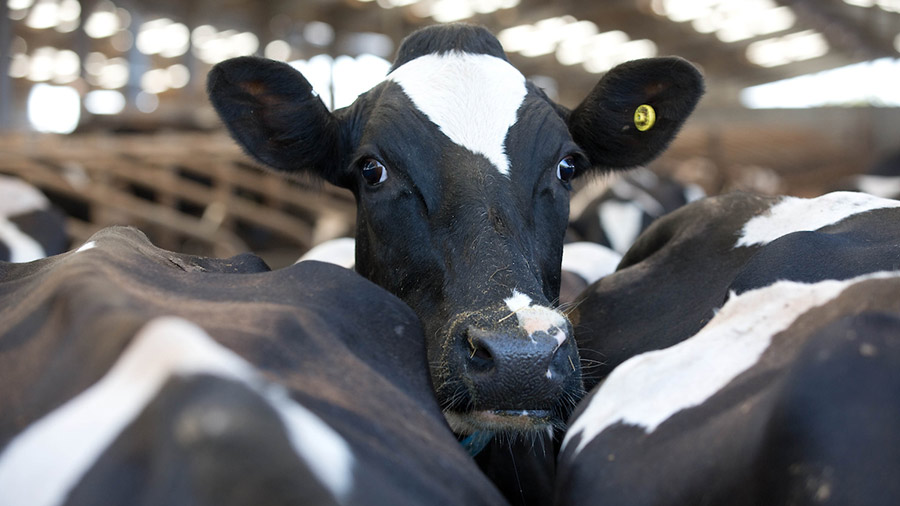Bovine TB in England at 15-year low, but what more can be done?
 © Tim Scrivener
© Tim Scrivener Greater collaboration from all stakeholders in the industry is key to achieving TB-free status.
This was the message from a packed room of delegates at the National TB Conference last week (29 November).
Sarah Tomlinson, Kingshay veterinary consultant and TB Advisory Service technical director, said the biggest barrier to TB control was the “them and us” mentality when it came government, vets, and farmers.
See also: 4 farmers’ badger-proofing inventions help cut TB risk
“We share a common goal: working towards a TB-free future. We need legislation to protect disease status and allow [farmers] to trade, but we also need to give vets and farmers choices to allow them to manage TB in line with their business goals.”
Defra’s Ele Brown echoed this sentiment, adding: “The common enemy is the bacteria, none of us in this room.”
Progress
TB is now at its lowest level in England in 15 years. Sarah said: “I believe the reduction in the badger density, through the hard work of the farmers and local vets and everyone working together, has had a massive impact on that.”
Lord Richard Benyon, Defra minister until the recent cabinet reshuffle, could not attend the conference but wrote a speech, which was read out by Ele.
He called TB a tragedy for British farming and reaffirmed the government’s commitment to badger culling.
“Where evidence supports culling, we will continue to take that course,” he said.
Challenges
Despite the progress in England, Sarah said thousands of new breakdowns were occurring in high risk areas (HRAs) annually and said more work was needed to stop this, including more sensitive testing.
She also urged the Animal and Plant Health Agency (Apha) to develop better communication lines with independent vets.
This would give farmers and their vets access to data to help them manage TB as they do other infectious diseases.
She described how farmers blighted by TB were unable to engage in positive steps towards reducing endemic disease or improving their farm’s carbon footprint.
“Farmers are too busy fire-fighting TB to have the physical and mental energy to do anything else – that’s what TB does.”
Next steps – collaboration and vaccination
Dr Ruth Little, social researcher at Defra, said collaboration between policymakers and those affected by TB was key to overcoming “fatalism” – whereby farmers feel they have no control over the disease.
She said there had been a “step change” at Defra and a realisation that working together with other stakeholders, and making sure farmers can feed back how proposals will affect their businesses, result in better outcomes.
One of these outcomes has been the setting up of the Core Group, comprising Defra, Apha and Welsh and Scottish governments, along with the British Cattle Veterinary Association, British Veterinary Association, NFU, researchers, scientists, and farmers.
The biggest breakthrough on the horizon is cattle vaccination, with 600 cattle on UK farms taking part in the second phase of a vaccination trial.
Half of the animals have been vaccinated and the remaining left unvaccinated.
Scientists will assess the safety of the vaccine alongside the efficacy of the Diva skin test, which it is hoped will be able to differentiate between vaccinated and non-vaccinated animals, unlike the skin test.
If the trials are successful, the vaccine will then need Veterinary Medicines Directorate approval, and new trading laws will need to be negotiated for vaccinated animals before farmers can start using it.
Prof James Wood, from the bTB Partnership, said experiments in Ethiopia, partly funded by the UK government, had showed that vaccinated cattle exhibited a 60% reduction in TB lesions.
In the UK, disease transmission is lower than Ethiopia, so it is hoped UK farms might see higher levels of efficacy like those reported in New Zealand, where efficacy was 86%.
Most importantly, James said Ethiopian studies showed there was a reduction in the transmission of disease where animals had been vaccinated.
He described the vaccine as “imperfect”, but said it could be an important part of the toolbox in HRAs.
“What’s important is that we don’t let perfect be the enemy of the good. We can still make progress, even if it is not perfect.”
